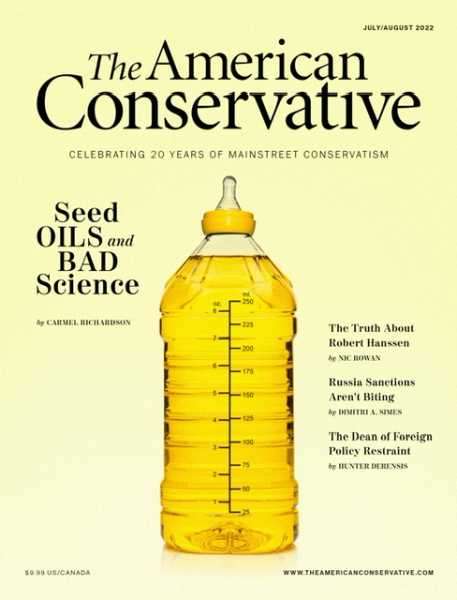
A curious aspect of today’s America is its combination of wealth and ugliness. In the past, money usually led to beauty: to classical, baroque, and art deco buildings, to the music of Biber, C.P.E. Bach, and Boccherini, to the art of Michelangelo, Titian, and Gainsborough. Now, money buys decadent art, painful music, and alienating architecture. Most prominent architects belong to the “turd in the punchbowl” school; they delight in forcing something disharmonious into a previously charming neighborhood. America’s commercial districts, with their endless strip malls and parking lots, have to be among the ugliest ever built. A southern mayor, speaking at a Congress on the New Urbanism, showed a slide of one of his city’s main streets and said, “I call this our corridor of crap.”
What has loosed this flood of ugliness upon us? It does not have to be this way. In the past, we built beautiful buildings. Millions of Americans attended the Columbian Exposition in Chicago in 1893. They saw a place where all the buildings were white, neo-classical, and brilliant with the new electric light. They asked, “Why cannot our cities look like this?” That question begat the City Beautiful movement, which gave us such magnificent structures as Washington’s Union Station. The popular music of the 1920s and ’30s was great stuff, enjoyed by all generations. American painters such as Winslow Homer and Andrew Wyeth equaled the best Europeans.
Advertisement
Three reasons why we are awash in ugliness stand out. The first is the abolition of the concept of beauty by relativism. If an educated man looks at, say, the Massachusetts State House in Boston and says, “That is a beautiful building,” he is quickly reprimanded by the cultural elite. “Who are you to judge?” he is asked. There are no objective standards. Everyone’s opinion is of equal value, and there are nothing but opinions. The Parthenon and a Dairy Queen have equal merit, and if you propose an aesthetic canon, you are showing your privilege. How dare you discriminate (bad word) between Shinola and other stuff?
A second reason is a change in the means of cultural transmission. In a brilliant book on this shift, Metropolitan Corridor, historian John Stilgoe argues that in the 19th and early 20th centuries, culture flowed from America’s great cities to its smaller cities and towns on the railroads. Local upper classes were connected by frequent train journeys to urban upper classes, on whom they modeled themselves. Local middle classes and even lower classes in turn copied the local upper class. Styles of clothing, architecture, manners, even worship (Anglo-Catholicism) flowed along the railways to the most remote corners of the country. The result was Victorian uplift: the cultural level of the whole nation rose.
Today, electronic screens are the means of cultural transmission, and they drive morals, aesthetics, and culture ever lower. Why? Because money is to be made by appealing to the widest audience, which means the least educated, crassest, and most vulgar. Relativism having abolished all standards, there are no limits on how low taste dare go. A few years ago, a brilliant movie, Idiocracy, extended this decline some hundreds of years into the future, with results that were both hilarious and horrifying. It got terrific reviews—until the elites realized it was Politically Incorrect and ordered it pulled from all the theaters (you can still turn your videoscreen on itself by watching it there).
Subscribe Today Get weekly emails in your inbox Email Address:
That leads us to a third force promoting ugliness: ideology, specifically the ideology of cultural Marxism, currently parading itself in the Emperor’s clothes of “wokeism.” The Frankfurt School, the creator of cultural Marxism, argued that because by (Marxist) definition life under capitalism is alienating, so to be “true” all art, music, architecture, etc., must also be alienating. It was aesthetics’ job, its purpose, to increase the alienation. The members of the Frankfurt School and the scholars who study them write with an opacity attainable only by German academics. But one of their clearer statements of this call for alienating art can be found in The Essential Frankfurt School Reader. Speaking of the School’s culture specialist, Theodor Adorno, editors Andrew Arato and Eike Gebhart write:
Adorno was forced to reevaluate the limits of possible cognition in both art and theory. To hold on to their essential cognitive function, both must appear as negative, as critique. In both art and theory, “the successful work is not one which resolves objective contradiction in a spurious harmony, but one which expresses the idea of harmony negatively by embodying the contradictions, pure and uncompromised, in its innermost structure.
These three forces—relativism that outlaws any canon of beauty, a greed-driven, dumpster-diving mode of cultural transmission, and the ideology of cultural Marxism—feed on each other in an aesthetic and cultural Totentanz. So we live in a rich society that dresses itself in filthy rags and wears plastic jewelry to history’s ball. Future generations, if there are any, will shake their heads in wonder, while we are left lying in a cesspool of ugliness, staring upward one-eyed through a reed at the stars.

This article appears in the July/August 2022 issue
Subscribe Now Advertisement
Sourse: theamericanconservative.com